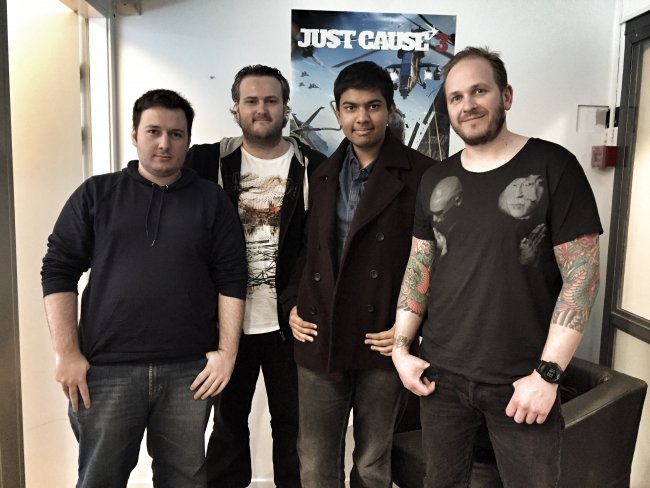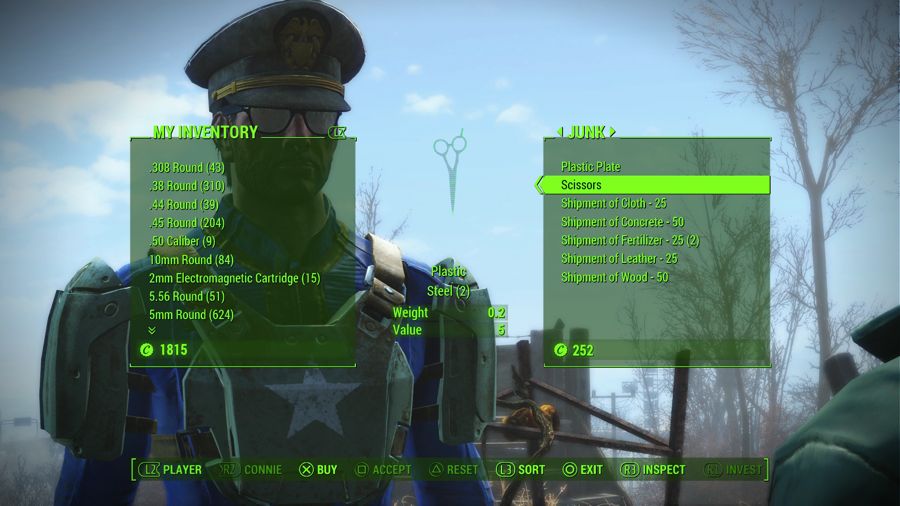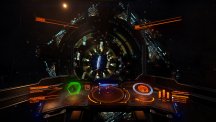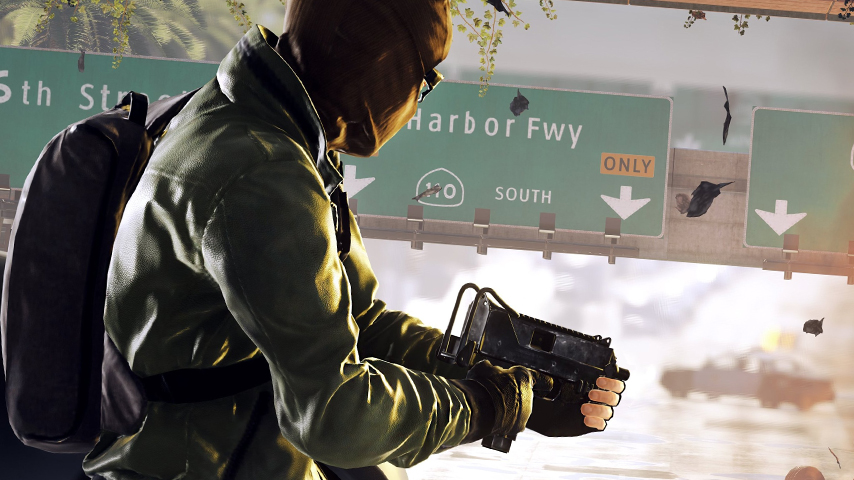

Very few games stand the test of time and manage to remain popular for five years. Even fewer single-player games manage this, but somehow Avalanche Studios' Just Cause 2 has endured and proven popular ever since its release in 2010.
But saying it's the single-player experience that'd captivated players this long isn't the whole truth. An ambitious modding project managed to pull off what the developers didn't think possible and developed a fully customisable multiplayer experience set in the sprawling islands of Panau.
"It's really helped the game stay alive for five years, and originally it's a single-player game and I've never heard of a single-player game that's been alive for five years," says Avalanche Studios co-founder and creative director Christofer Sundberg. "So it has absolutely helped and it has evolved the franchise. It's been a fantastic collaboration that I hope will continue in some shape or form."
We're visiting Avalanche Studios in Stockholm where the team is hard at work on Mad Max. But the purpose of our visit is to sit down with three guests from Australia that have spent a week at the Avalanche offices.
Cameron Foote, Troy Myers and Mithun Hunsur are the core team of the Just Cause 2 multiplayer mod. And getting Just Cause 2 to work as a multiplayer game has been a long and arduous journey.
"You're basically staring at a wall of noise, trying to figure out what noise is doing what," explains Cameron Foote of digging in and altering the studio's work. Foote spends his days reverse-engineering malware and his evenings reverse-engineering Just Cause 2. "Getting a car to move smoothly you have to go and reverse-engineer the car's memory structure, as well as part of Havoc, because you need to use Havoc to move the car. Just finding valuable data in effectively noise is the hardest part. Cause you have no idea."
Naturally the modders have seen things and taken the game where no-one thought possible.
"The most apparent [takeaway] is that the game actually works with multiplayer," says creative director Christofer Sundberg. "That's something that we've always considered and for a while it was all these discussions with the publisher; not only Eidos back in that time, but with other publishers, that multiplayer was needed just to battle piracy. And it just felt like a waste of time for us.
"We've always looked at the sandbox experience and seen that as the most challenging part and that's been the core of Just Cause 1, 2, and 3 and now with Mad Max. We've always had this dream of multiplayer, but we've never figured out how to do it properly and then these guys came sent from heaven."
How did all start then? Five years ago when the Just Cause 2 demo was released, Cameron Foote and Troy Myers were amazed by the game, but wondered what it would be like in multiplayer.
"It can't be that hard," recollects Myers while chuckling. "We started looking at the files and realised that there's a few modding tools already available," explains Foote. "Rick (or his name is Gibbed online) figured out how to access the archives, and so we were able to actually get into the game files."
"One day we made a prototype and once the full game came out we reversed it a bit more," continues Foote. "The game comes out and we release a little video in the dark, which is handy, just driving around a snow slope with two players in a network scenario and people just went crazy."

But that's when they ran into some problems. They hit a road block and development stopped for about two years. They couldn't figure out how to solve a problem with spawning vehicles. It was Troy who stumbled upon the solution as he was able to break the limitation of spawning vehicles.
"I was always looking through the game files, going back and forth a lot to find another way of accessing vehicles," recalls Myers. "And we ended up going with the way that in single-player, they spawn the traffic vehicles, the cars driven around by the NPCs and whatnot. We found the limit of that and managed to increase it."
The road block illustrates both the problem and attraction of reverse- engineering a game that was never intended for multiplayer in order to allow it. Searching for solutions in the noise has an addictive element that quite clearly attracts the members of the team.
"A few months after they started working again, I was working on my own project to do with JC2," says the third member of the team, Mithun Hunsur. "They contacted me and said 'hey, it looks like you're doing something interesting in this area, we'd like you to help out'. So I joined the team and started helping out with just various things. And then as the years went by my role grew and I managed to add some really interesting features to the game."
"He made it look pretty," says Foote. "Cause [before Hunsur joined the build] was 'developer pretty' - white text on a changing background. It was all my fault cause I can't design anything to make it visually nice."
Scale is one thing that the Just Cause franchise has always offered, but the multiplayer was initially not meant to be as massive as it would turn out.
"We were expecting it to be this small, little... our initial scope was like 8-16 players," says Foote. "1800 wasn't really what we were gunning for, but it happened. We sort of had to scale really quickly. At that point it was sort of managing a full time project. Which was quite fun actually, it was enjoyable."
"And stressful," chips in Hunsur. "We spent many hours awake just watching the servers."
The team grew larger than the trio here today. A fourth member works out of the US who's mainly been working on the frontend side of things. There's also a guy from the Netherlands ("a server infrastructure kind of guy") who Cameron and Troy knew since the start of the project and who was involved, not so much with the development, but contributed to the backend of the website and the services needed there.
A lot has come to pass over the years from the early days of their homebrew DRM (designed to prevent players without a legal copy of Just Cause 2 from playing) to arriving on Steam proper, and seeing tons of various creative modes spawn from the community.
Troy Myers was responsible for one of the most ambitious modes - Battle for Panau. Inspired by Battlefield the mode offered 369 capture points. "I toyed around with trying to balance the grapple," explains Myers. "That was an ongoing scenario where basically there are 369 bases across Panau and they're all different capture points. There are the three factions from the single-player and they were opposing forces trying to take over the entire map, basically. Which worked great with large numbers of players in the beginning, but not so great as we've sort of scaled back over the years. But it was good fun for when it was popular."
The Just Cause 2 multiplayer mod community has more than 220,000 members - each and every one with an authenticated copy of Just Cause 2. And players are still flocking to the servers, with new modes, activities and sub-groups popping up.
"There's a road trip group that just takes a bunch of road trips around the map," says Hunsur. "They've got a schedule as well," adds Foote. "It could be fun just to join in to one of their sessions just to hang out with a bunch of people. There are several in which you can build things, actually several servers, and people just use that to build their own massive structures."
"There's a group of people who operate as taxis. Just virtual taxis driving people around," continues Hunsur.
"One of the most interesting servers, it's effectively survival in Panau's main city," says Foote. "And they make you work to get the grapple hook. You've got to find it. So it takes away the main component of the Just Cause franchise and makes you work for it and that really works."
"It's completely different from Just Cause in a gameplay sense, but it works," adds Hunsur. "Just seeing what people have done with our core base, the framework we've given them, and just to see what they've put together with that."
"There's a role-playing server that also gets rid of the grappling hook and just plays around with the framework of the game," says Hunsur. "Just having people coming together to create an emergent story."
"There's an aircraft role-play server in the crazy amazing simulation of planes that is Just Cause," says Foote with the rest of the room trying to contain their laughter. "You get a plane and you have to request landing, and the landing can be rejected because it is being used by another plane. It's actually somewhat popular."
The Just Cause 2 multiplayer mod wouldn't be where it is today without assistance from publisher Square-Enix and Steam, with Steam contacting the team to get the mod on its store.
"We're DLC, but we're also a game technically. Usually DLC is not a game. So they've had to do a little working around to actually get us working on there. Which is amazing."
The three Australian modders have spent a week visiting Avalanche Studios in Stockholm. We ask them what they think of Just Cause 3 and all we get is "awesome," with the follow-up that they were basically let loose on the game as it is, no restraints, and naturally most of what they saw and experienced is still very much being kept secret. Over the week the trio has been talking to members of the development team about their finds, perhaps gaining new insights into the software that powers Avalanche Studios' games.

Many successful mod teams have taken the step to go into full game development over the years, but don't expect the JC2MP team to take that road.
"We've thought about it," says Foote. "But it's easier to step off of another game versus starting from scratch. Cause the three of us, while we are passionate about games, but at the same time it's sort of like a hobby that turned into a full-time hobby."
Is their visit then an indication that Just Cause 3 might get a multiplayer mod down the line? Perhaps, but more than that it was Avalanche's way of saying thanks for all that they've done to help build the brand.
It is hard to imagine that we're not going to see some kind of multiplayer mod for Just Cause 3, and if not by the JC2MP team, then someone else will surely step up to start figuring out the brand new cloud of noise. And by the sounds of it, Avalanche haven't made it any easier on them this time around.
"We obviously support the modding community and so on, but based on time and budgets and all of that, making more modding friendly tools and making the game more modding friendly has kind of fallen behind unfortunately," says Sundberg. "It's definitely something that we'd like to do in the future."
The team estimates it would take them two more years to perfect Just Cause 2 multiplayer, but with the release of Just Cause 3 approaching they want to wrap up sooner with a clean patch and finally calling their time on their tinkering of Panau so they can grapple with something else.



